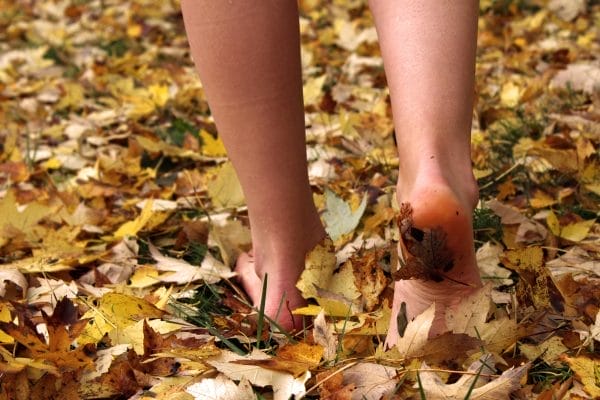The Benefits of Walking Barefoot: Why You Should Try It Daily
Walking barefoot, often referred to as “earthing” or “grounding,” is a practice as old as humanity itself. Before the invention of shoes, our ancestors walked the earth unshod, connected physically and spiritually to the ground beneath their feet. In modern times, with the prevalence of footwear for all occasions, we’ve lost touch with this simple pleasure and the numerous benefits it can bring to our health and well-being.
In this article, we’ll explore the myriad advantages of walking barefoot and why you might want to consider incorporating this activity into your daily routine.

The Basics of Barefoot Walking
![]()
Walking barefoot is exactly as it sounds—engaging in walking without the use of shoes or socks, allowing the soles of your feet to make direct contact with the ground. This can be done indoors or outdoors, with many enthusiasts advocating for the latter, especially on natural surfaces like grass, sand, or soil.
Why Walk Barefoot?
![]()
Let’s dive into the benefits of walking barefoot and the reasons why it might just be worth leaving your shoes at the door more often.
Physical Health Benefits
- Strengthens Foot Muscles: Shoes often provide a lot of support, which can actually lead to weaker foot muscles over time. Walking barefoot challenges the muscles in your feet, leading to stronger arches and improved overall foot health.
- Improves Balance and Posture: When you walk barefoot, you’re more likely to pay attention to your step, leading to better balance and posture as your body aligns itself naturally to walk across various surfaces.
- Enhances Circulation: Freeing your feet from the confines of shoes can improve blood flow, which is beneficial for heart health and can reduce swelling in the lower extremities.
- Reduces Foot Pain: Many people suffer from foot pain due to conditions like plantar fasciitis. Walking barefoot can help alleviate this pain by allowing the foot to move naturally, without the constraints of tight or ill-fitting shoes.
Mental and Emotional Health Benefits
- Stress Reduction: The act of walking barefoot can be incredibly soothing, helping to reduce stress and anxiety levels. The connection with the earth can be a grounding experience, both literally and figuratively.
- Improved Sleep: Some studies suggest that walking barefoot can help regulate the body’s natural rhythms, leading to better sleep patterns and quality of rest.
Walking Barefoot on Grass
![]()
While walking barefoot on any surface can be beneficial, there’s something special about walking barefoot on grass. The benefits of walking barefoot on grass are numerous and can enhance the overall barefoot walking experience.
- Natural Cushioning: Grass provides a soft surface that is gentle on the feet, reducing impact and the likelihood of injury.
- Cooling Effect: On a warm day, the coolness of the grass can be incredibly refreshing, helping to regulate body temperature.
- Connection with Nature: Walking barefoot on grass can deepen your connection to the earth, providing a sense of peace and tranquility that’s hard to find in the hustle and bustle of everyday life.
Scientific Evidence Supporting Barefoot Walking
![]()
Several research studies have looked into the practice of walking barefoot and its effects on health. One study found that walking barefoot might help to reduce the risk of chronic diseases like heart disease and type 2 diabetes. Another research suggested that children who walked barefoot regularly had better motor skills and were less likely to develop flat feet.
Furthermore, the concept of grounding – the direct contact between the skin and the surface of the Earth, which allows for the transfer of electrons – has been studied for its potential to neutralize free radicals and reduce inflammation in the body. While more research is needed to fully understand the implications of these findings, the existing evidence provides a compelling case for the practice of walking barefoot.
How to Start Walking Barefoot
![]()
If you’re new to the idea of walking barefoot, it’s important to start slowly to allow your feet to adjust. Here are some tips for getting started:
- Begin by spending short periods walking barefoot around your home.
- Gradually increase the time you spend barefoot each day.
- Move to softer outdoor surfaces like grass or sand before attempting harder surfaces.
- Pay attention to the sensations in your feet—any pain or discomfort could indicate that you’re doing too much too soon.
- Keep your walking area clean to avoid stepping on harmful objects.
Considerations and Precautions
![]()
While there are many benefits to walking barefoot, it’s not without its risks. Here are some considerations to keep in mind:
- Be aware of your environment and watch out for potential hazards like glass, rocks, or thorns.
- People with diabetes or other conditions that affect sensation in the feet should consult with a healthcare provider before starting a barefoot walking routine.
- Make sure your tetanus vaccinations are up to date, as walking barefoot can increase the risk of tetanus infection from soil-borne bacteria.
Conclusion: Embracing the Barefoot Lifestyle
![]()
Walking barefoot is a simple yet profound way to improve your physical and mental health, connect with nature, and rediscover the joy of feeling the earth beneath your feet. The benefits of walking barefoot, particularly on grass, are supported by both anecdotal evidence and scientific research. As with any lifestyle change, it’s important to start slowly and be mindful of any potential risks. So, why not take a moment to kick off your shoes, step outside, and enjoy the liberating experience of walking barefoot on grass? Your body and mind might just thank you for it.

